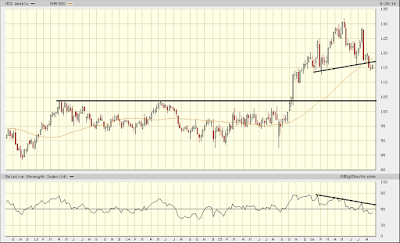The European Central Bank's desire to spur on growth with easy money at below zero interest rate means the banking sector in Europe are having a tougher time generating income from conventional means, putting stockholders out of pocket in terms of dividends and sending the industry into a downward spiral in attempts to find alternate forms of return that aren't appropriate risks.
We saw speculation around the continuity of Deutsche Bank's existence enter the fray at the beginning of the week with many investors not seeing much hope for the German lender who has its back up against the wall with a litany of legal cases to deal notwithstanding a whopping $14 billion fine imposed on it by the US Department of Justice relating to the mis-selling of mortgage backed securities at the climax of the Financial Crisis bubble.
Besides this inconvenience, management has to deal further with the bleak outlook of oil prices having made considerable investment into alternate energy resources, most notably in the United States with regards to shale gas extraction. Lower oil prices has seen US producers battling to eradicate losses let alone break even translating into a scenario of a house of cards for the European lender.
Since then we heard from the second largest lender in Germany and main competitor to Deutsche Bank, Commerzbank announcing a restructuring program that'll see 9600 jobs shed by 2020 and dividends cut to fund it. Deutsche Bank has a similar program in place so it was only a matter of time before the others joined the party.Largest Dutch Bank To Fire Thousands https://t.co/4b3wbEhLdt— zerohedge (@zerohedge) September 30, 2016
Today we've heard unconfirmed reports that the Netherland's biggest lender, ING Group, might effect the same when it hosts its stockholders early next week leaving many wondering if these measures will become commonplace amongst Europe's top lenders.
The crux of the matter is these actions should send alarm bells ringing in the headquarters of the ECB who have insistently delved deeper into the experimentation of low interest rates for extended periods on end without fully realising the wider consequences of their own actions.
We shouldn't forget that one of Europe's greatest value producing sectors is the financial industry, providing thousands of jobs for highly skilled people who spend a high amount of their incomes in other sectors of the economy. If the proposed job losses are to go ahead all the good the ECB believes it can do in helping economic growth tick up will fall in a heap.
It again comes down to what I've said earlier in the week, the decision by the ECB will not be taken on which action produces the best outcome but rather the one with the least consequences.




